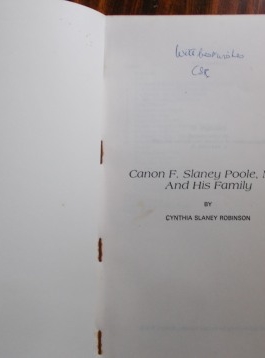-
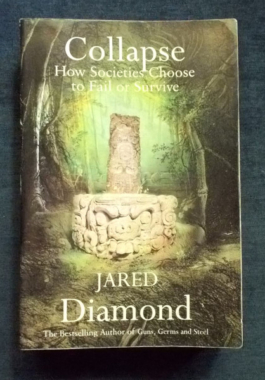
Collapse: Jared Diamond
$10.00Why do some societies and civilisations flourish, while others flounder? What happened to those who made the forlorn, abandoned statues of Easter Island? Or to the architects of the crumbling Mayan pyramids? One day, will our skyscrapers stand derelict and overgrown? Many cultures have disintegrated because of environmental crises - and most of those were self induced. The author takes us on a comprehensive, rich tour of history and the world, with a neat little trip into a possible future. Black and white photos. -
 The sequel to Below Stairs. From the grand houses of Brighton to imposing London mansions, life as a kitchen maid could be exhausting and demoralising. It’s not just being at the beck and call of the people upstairs, when even the children of the family can treat you like dirt, but having to deal with temperamental cooks, starchy butlers and chauffeurs with a roving eye. Marriage is the only escape, but with one evening off a week Margaret has no time to lose. Between Perce the bus conductor (who brings his mother on dates) and Mr Hailsham the fishmonger (who looks – and smells – a bit like his wares), her initial prospects are hardly the stuff of dreams. But then she meets Albert; a butcher boy-turned-milkman. Could he be the perfect husband? And can she make the perfect wife when, as she soon discovers, years spent serving others don't prepare you for managing your own life? Soon Margaret begins to wonder – how can someone like her ever improve their station? Told with her trademark sharp wit and warmth, Climbing the Stairs is a uniquely observant autobiography of a time when the idea of masters and servants began to lose its sway and of a remarkable woman who grasped the opportunities of this brave new world with both hands.
The sequel to Below Stairs. From the grand houses of Brighton to imposing London mansions, life as a kitchen maid could be exhausting and demoralising. It’s not just being at the beck and call of the people upstairs, when even the children of the family can treat you like dirt, but having to deal with temperamental cooks, starchy butlers and chauffeurs with a roving eye. Marriage is the only escape, but with one evening off a week Margaret has no time to lose. Between Perce the bus conductor (who brings his mother on dates) and Mr Hailsham the fishmonger (who looks – and smells – a bit like his wares), her initial prospects are hardly the stuff of dreams. But then she meets Albert; a butcher boy-turned-milkman. Could he be the perfect husband? And can she make the perfect wife when, as she soon discovers, years spent serving others don't prepare you for managing your own life? Soon Margaret begins to wonder – how can someone like her ever improve their station? Told with her trademark sharp wit and warmth, Climbing the Stairs is a uniquely observant autobiography of a time when the idea of masters and servants began to lose its sway and of a remarkable woman who grasped the opportunities of this brave new world with both hands. -

Cleo: Helen Brown
$9.00Helen Brown wasn't a cat person, but her nine-year-old son Sam was. So when Sam heard a woman telling his mum that her cat had just had kittens, Sam pleaded to go and see them. Helen's heart melted as Sam held one of the kittens in his hands with a look of total adoration. In a trice the deal was done - the kitten would be delivered when she was big enough to leave her mother. A week later, Sam was run over and killed. Not long after, a little black kitten was delivered to the grieving family. Totally traumatised by Sam's death, Helen had forgotten all about the new arrival. After all, that was back in another universe when Sam was alive. Helen was ready to send the kitten back, but Sam's younger brother wanted to keep her, identifying with the tiny black kitten who'd also lost her brothers. When Rob stroked her fur, it was the first time Helen had seen him smile since Sam's death. There was no choice: the kitten - dubbed Cleo - had to stay. Kitten or not, there seemed no hope of becoming a normal family. But Cleo's zest for life slowly taught the traumatised family to laugh. She went on to become the uppity high priestess of Helen's household, vetoing her new men, terrifying visiting dogs and building a special bond with Rob, his sister Lydia, Helen - and later a baby daughter. -
 A comprehensive coverage of the subject from an author with 38 years experience in the field. ISBN 0444196439
A comprehensive coverage of the subject from an author with 38 years experience in the field. ISBN 0444196439 -
 An erudite guide to twelve of the most famous sites of myth and legend: Atlantis; Pyramid Hill; Stonehenge; Troy; the Queen of Sheba; King Solomon's Mines; Tintagel and the Round Table; Angkor; Tikal and the Feathered Elephants; Machu Piccu; Nan Matol and Rapa Nui. Each site is described, factual and legendary history is reviewed and theories and controversy examined. Illustrated with black and white photographs.
An erudite guide to twelve of the most famous sites of myth and legend: Atlantis; Pyramid Hill; Stonehenge; Troy; the Queen of Sheba; King Solomon's Mines; Tintagel and the Round Table; Angkor; Tikal and the Feathered Elephants; Machu Piccu; Nan Matol and Rapa Nui. Each site is described, factual and legendary history is reviewed and theories and controversy examined. Illustrated with black and white photographs. -
 Those interested in 8 mm, 9.5 mm or 16 mm - or those who may still even have one - will find this book of practical value, full of sound, expert advice and instruction on every aspect of this art. The principles of projection and the mechanics of the individual projector are discussed clearly and simply, step by step and the reader is introduced to methods to ensure a smooth running projection technique. Illustrated.
Those interested in 8 mm, 9.5 mm or 16 mm - or those who may still even have one - will find this book of practical value, full of sound, expert advice and instruction on every aspect of this art. The principles of projection and the mechanics of the individual projector are discussed clearly and simply, step by step and the reader is introduced to methods to ensure a smooth running projection technique. Illustrated. -
 Sir Winston Churchill’s paternal grandmother (the mother of Randolph) has been a background figure in many biographies but her own story has never been told until now. As the eldest daughter of 3rd Marchioness of Londonderry, Frances’s life was steeped in great historical names and occasions, from Tsar Alexander I and the Duke of Wellington (her godfather) to her childhood friendship with Queen Victoria, and ultimately her famous grandson, Sir Winston Churchill. She was an inspiring woman who transformed Blenheim Palace into not only a family home, but also a social and political focus for the life of the nation. She was a deeply caring woman who often acted as a surrogate mother to the younger members of her family, including Winston. Her crowning achievement, fully and dramatically retold in this book, was her humanity, leadership, and skill in averting the effects of the Irish potato famine of 1879. It was this most public performance which brought Frances the award of the Order of Victoria and Albert from Queen Victoria herself, normally reserved for members of the royal family. Illustrated.
Sir Winston Churchill’s paternal grandmother (the mother of Randolph) has been a background figure in many biographies but her own story has never been told until now. As the eldest daughter of 3rd Marchioness of Londonderry, Frances’s life was steeped in great historical names and occasions, from Tsar Alexander I and the Duke of Wellington (her godfather) to her childhood friendship with Queen Victoria, and ultimately her famous grandson, Sir Winston Churchill. She was an inspiring woman who transformed Blenheim Palace into not only a family home, but also a social and political focus for the life of the nation. She was a deeply caring woman who often acted as a surrogate mother to the younger members of her family, including Winston. Her crowning achievement, fully and dramatically retold in this book, was her humanity, leadership, and skill in averting the effects of the Irish potato famine of 1879. It was this most public performance which brought Frances the award of the Order of Victoria and Albert from Queen Victoria herself, normally reserved for members of the royal family. Illustrated. -
 Chips Rafferty became a legendary figure with an indefinable star quality and a presence that seemed, to the world at large, to be every Anzac rolled into one. He was always passionately committed to the Australian film industry. Yet for a long time he was either knocked, ognored or taken for granted in his own country. Born John William Pilbeam Goffage, the sone of a miner near Broken Hill, he became Chips Rafferty much later . Diverted from is first ambition - commercial art - Chips wandered through the back blocks from Queenland to Victoria for ten years, working as a drover, a shearer, a miner, a 'roo shooter, a fisherman and opal fossicker. The progression from extra to star to character actor began slowly, and his success in such classic films as The Overlanders, Forty Thousand Horsemen, Rats Of Tobruk and Bush Christmas made his name world-wide. Illustrated with black and white photographs.
Chips Rafferty became a legendary figure with an indefinable star quality and a presence that seemed, to the world at large, to be every Anzac rolled into one. He was always passionately committed to the Australian film industry. Yet for a long time he was either knocked, ognored or taken for granted in his own country. Born John William Pilbeam Goffage, the sone of a miner near Broken Hill, he became Chips Rafferty much later . Diverted from is first ambition - commercial art - Chips wandered through the back blocks from Queenland to Victoria for ten years, working as a drover, a shearer, a miner, a 'roo shooter, a fisherman and opal fossicker. The progression from extra to star to character actor began slowly, and his success in such classic films as The Overlanders, Forty Thousand Horsemen, Rats Of Tobruk and Bush Christmas made his name world-wide. Illustrated with black and white photographs. -
 Antonino is an abandoned child struggling for survival in the dark alleys of Naples. He is one of thousands whose waking hours are spent in petty crime and whose bed is a street grating above a baker's oven. At eight years old, his body is so small, his face so pinched, you would take him for five or six. Yet there is hope, in the shape of a young priest, Mario Borrelli. In a journey of self-transformation and love, Father Borrelli befriends the street children and sets up a support network for them: The House of the Urchins. Morris West spent time in the slums of impoverished postwar Naples. His chilling account of the local street urchins in his international bestseller Children of the Sun drew the world's attention to their plight, and offers a timeless insight into child poverty. West's portrayal of Father Borelli has inspired many others to follow in Borelli's footsteps.
Antonino is an abandoned child struggling for survival in the dark alleys of Naples. He is one of thousands whose waking hours are spent in petty crime and whose bed is a street grating above a baker's oven. At eight years old, his body is so small, his face so pinched, you would take him for five or six. Yet there is hope, in the shape of a young priest, Mario Borrelli. In a journey of self-transformation and love, Father Borrelli befriends the street children and sets up a support network for them: The House of the Urchins. Morris West spent time in the slums of impoverished postwar Naples. His chilling account of the local street urchins in his international bestseller Children of the Sun drew the world's attention to their plight, and offers a timeless insight into child poverty. West's portrayal of Father Borelli has inspired many others to follow in Borelli's footsteps. -
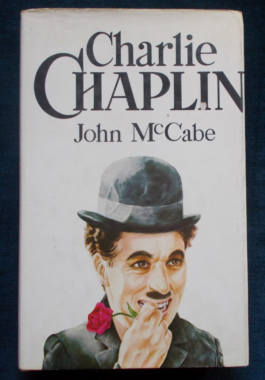
Charlie Chaplin: John McCabe
$15.00The author set out to find the truth behind the endless legends, misconceptions and errors surrounding Charlie's life - both public and private - by drawing on available record and through personal interviews. Charlie was born and raised in London's Victorian slums and turned the straightforward craft of slapstick into an art that the world can never forget. 'The Little Tramp' was not the man the world saw on the screen - he was an enormously complex man. But he gave the world laughter, and so - he gave the world everything. -
 Charles Stewart Parnell (1846 - 1891) came closer, perhaps, than anyone to solving the Irish problem while keeping Britain united, Protestant, aloof, English-educated, he was an unlikely character to fulfil the role of Messiah for Irish nationalists. Yet they called him the uncrowned king of Ireland and were it not for ill-health and his doomed liasion with Kitty O'Shea, this enigmatic Anglo-Irishman might well have achieved a lasting Irish peace; that he did not was England's and Ireland's tragedy as well as his own. Winner of the Royal Society of Literature Award, 1977. Illustrated with black and white photographs.
Charles Stewart Parnell (1846 - 1891) came closer, perhaps, than anyone to solving the Irish problem while keeping Britain united, Protestant, aloof, English-educated, he was an unlikely character to fulfil the role of Messiah for Irish nationalists. Yet they called him the uncrowned king of Ireland and were it not for ill-health and his doomed liasion with Kitty O'Shea, this enigmatic Anglo-Irishman might well have achieved a lasting Irish peace; that he did not was England's and Ireland's tragedy as well as his own. Winner of the Royal Society of Literature Award, 1977. Illustrated with black and white photographs. -
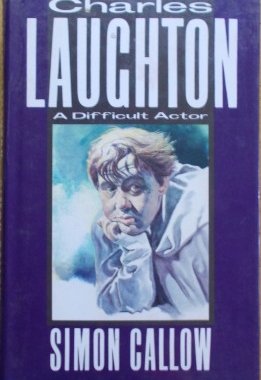 Laughton gifted the world with a number of universally recognised film characters: The Hunchback of Notre Dame, Captain Bligh, Henry Hobson and Henry VIII, as well as the unfinished epic Claudius. This bio traces a fifty year film and stage career; from West End hits and Old Vic classics, to Broadway and Hollywood, working for the great directors and producers of Hollywood. He was described as ugly, difficult and yet magnetic and endured a lifetime battle to come to terms with his homosexuality as well as a thirty marriage to actress Elsa Lanchester. Black and white photos, as well as an intense filmography, playography and bibliography.
Laughton gifted the world with a number of universally recognised film characters: The Hunchback of Notre Dame, Captain Bligh, Henry Hobson and Henry VIII, as well as the unfinished epic Claudius. This bio traces a fifty year film and stage career; from West End hits and Old Vic classics, to Broadway and Hollywood, working for the great directors and producers of Hollywood. He was described as ugly, difficult and yet magnetic and endured a lifetime battle to come to terms with his homosexuality as well as a thirty marriage to actress Elsa Lanchester. Black and white photos, as well as an intense filmography, playography and bibliography. -
 Dickens was an adept at what he called laying his hand upon the time, and in doing so became the recognised exponent of the English character and society to Victorian England and to the world. He revealed the masses to the classes in one country, and people all over the world understood what he had to say. No-one of his day understood the condition of England better and he appealed to the people with his life long crusade against illiteracy, vile industrial conditions and slumdom. His novels paint the most vivid picture of the appalling conditions that were considered adequate for the poor and the complete lack of interest from those in power who could have changed these conditions, not to mention the corruption endemic amongst those in power. His books were instrumental in creating the awareness needed for lasting and beneficial change.
Dickens was an adept at what he called laying his hand upon the time, and in doing so became the recognised exponent of the English character and society to Victorian England and to the world. He revealed the masses to the classes in one country, and people all over the world understood what he had to say. No-one of his day understood the condition of England better and he appealed to the people with his life long crusade against illiteracy, vile industrial conditions and slumdom. His novels paint the most vivid picture of the appalling conditions that were considered adequate for the poor and the complete lack of interest from those in power who could have changed these conditions, not to mention the corruption endemic amongst those in power. His books were instrumental in creating the awareness needed for lasting and beneficial change. -

In 1931, Charlie Chaplin's film City Lights turned 20-year-old newcomer Virginia Cherril into the most famous girl in the world. She went on to become the adored first wife who broke Cary Grant's heart when she left him; she turned down the very eligible Maharajah of Jaipur to befriend his Indian wife; and in the 1940s she became the Countess of Jersey. All that eluded her was love. And when she found it, she gave up everything she had to marry a handsome, Polish flying ace whose dream it was to become a cowboy. Illustrated with black and white photographs.
-
 Sir Cecil Beaton (1904 –1980): English fashion, portrait and war photographer; painter; diarist and Academy Award–winning stage and costume designer. In short, a cultural icon. For almost as long as he could write, Cecil Beaton kept his diaries. They accumulated year after year, and from a formidable pile of notebooks he extracted enough to fill six volumes. Like any young man, he had his set-backs; growing up in a much-changed England post-World War I; differences with his devoted but at times unsympathetic family; his doubts and failures; he describes his friendships with famous men and women, artists, writers, actors, film stars and celebrated socialites; the friends of his youth and childhood, his parents and relations against the background of an ordinary English household. This first volume covers seventeen years from 1922 to 1939 and is a fascinating and disarming book covering the fascinating times of World War II and the Golden Age of Hollywood. Illustrated with black and white photographs.
Sir Cecil Beaton (1904 –1980): English fashion, portrait and war photographer; painter; diarist and Academy Award–winning stage and costume designer. In short, a cultural icon. For almost as long as he could write, Cecil Beaton kept his diaries. They accumulated year after year, and from a formidable pile of notebooks he extracted enough to fill six volumes. Like any young man, he had his set-backs; growing up in a much-changed England post-World War I; differences with his devoted but at times unsympathetic family; his doubts and failures; he describes his friendships with famous men and women, artists, writers, actors, film stars and celebrated socialites; the friends of his youth and childhood, his parents and relations against the background of an ordinary English household. This first volume covers seventeen years from 1922 to 1939 and is a fascinating and disarming book covering the fascinating times of World War II and the Golden Age of Hollywood. Illustrated with black and white photographs. -
 The lives of the hardy mountain cattlemen of Victoria Alpine Country revolve around the annual Muster held before the first snowfall of Autumn when they bring the cattle down to lower pastures for winter feeding or consign them to auction at the annual calf sales. The resourcefulness and of the Mountain cattlemen shows n the way they meet all trials and tribulations - bushfire, floods and snow storms - not to mention their skill at tall tales! It's a close knit community and always has been - it's a hard life and not one of them would change it. Illustrated with black and white and colour photographs.
The lives of the hardy mountain cattlemen of Victoria Alpine Country revolve around the annual Muster held before the first snowfall of Autumn when they bring the cattle down to lower pastures for winter feeding or consign them to auction at the annual calf sales. The resourcefulness and of the Mountain cattlemen shows n the way they meet all trials and tribulations - bushfire, floods and snow storms - not to mention their skill at tall tales! It's a close knit community and always has been - it's a hard life and not one of them would change it. Illustrated with black and white and colour photographs. -
 Cat; n. Small domesticated carnivorous quadruped. This selection of writings has been presented as Nine Lives: The Kittenish; The Legendary; The Traditional; The Diabolical; The Poetical; The Domestic; The Curious; The Wild and The Last. A fabulous vintage volume for those who worship and observe cats. Illustrated with black and white photographs.
Cat; n. Small domesticated carnivorous quadruped. This selection of writings has been presented as Nine Lives: The Kittenish; The Legendary; The Traditional; The Diabolical; The Poetical; The Domestic; The Curious; The Wild and The Last. A fabulous vintage volume for those who worship and observe cats. Illustrated with black and white photographs. -

 Looking after animals is no job for a man of sedentary disposition or sluggish mind. What action should one take, for example, when chimpanzees are having a pillow fight in the spare room, a fat lady sits on the macaw and the orang-utan enjoys being felt with the stethoscope so much she develops a phantom pregnancy so the treatment continues? Durrell also has a tale to tell of a trip to Sierra Leone to catch a Colobus and an expedition to Mexico to acquire a Volcano rabbit and a thick-billed parrot. And in true Durrell form, his odyssey is littered with hilarious mishaps and unexpected triumphs.
Looking after animals is no job for a man of sedentary disposition or sluggish mind. What action should one take, for example, when chimpanzees are having a pillow fight in the spare room, a fat lady sits on the macaw and the orang-utan enjoys being felt with the stethoscope so much she develops a phantom pregnancy so the treatment continues? Durrell also has a tale to tell of a trip to Sierra Leone to catch a Colobus and an expedition to Mexico to acquire a Volcano rabbit and a thick-billed parrot. And in true Durrell form, his odyssey is littered with hilarious mishaps and unexpected triumphs. -

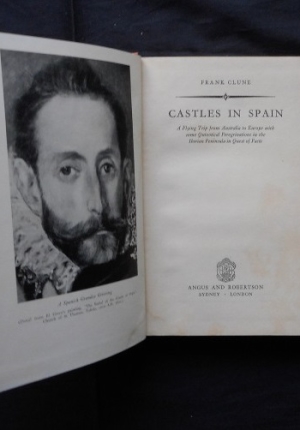 Frank Clune, Australia's answer to H.V. Morton, makes a flying trip from Australia to Europe with some 'Quixotical' peregrinations in the Iberian Peninsula in quest of facts. And so he does - accompanied by his wife now that the boys are more than old enbough to be left on their own. No trip to Spain in 1952 would have been complete without a bull fight, but the Clunes also look into many out-of- way and off-the-tourist-track places. With black and white photographs.
Frank Clune, Australia's answer to H.V. Morton, makes a flying trip from Australia to Europe with some 'Quixotical' peregrinations in the Iberian Peninsula in quest of facts. And so he does - accompanied by his wife now that the boys are more than old enbough to be left on their own. No trip to Spain in 1952 would have been complete without a bull fight, but the Clunes also look into many out-of- way and off-the-tourist-track places. With black and white photographs. -

NASA astronaut Michael Collins trained as an experimental test pilot before venturing into space as a vital member of the Gemini 10 and Apollo 11 missions. In Carrying the Fire, his account of his voyages into space and the years of training that led up to them, Collins reveals the human tensions, the physical realities, and the personal emotions surrounding the early years of the space race. Collins provides readers with an insider's view of the space program and conveys the excitement and wonder of his journey to the moon. As skilled at writing as he is at piloting a spacecraft, Collins explains the clash of personalities at NASA and technical aspects of flight with clear, engaging prose, withholding nothing in his candid assessments of fellow astronauts Neil Armstrong, John Glenn, and Buzz Aldrin, and officials within NASA. A fascinating memoir of mankind's greatest journey told in familiar, human terms.
-

 This biography covers Grant's youth and young manhood from 1822 to 1861. The narrative covers from Grant's birth, his days at West Point; his courtship and marriage, his experiences during the Mexican war, and his subsequent time as a civilian before his comeback as a soldier during the Civil War. His main ambition to become a mathematics tutor at West Point, yet he was diverted into a war of aggression and territorial acquisition which he believed to be fundamentally immoral.Written with the assistance of Lewis' friend and colleague, noted Civil War historian, Bruce Catton, who would go on to write two more volumes covering Grant's wartime career, Grant Moves South and Grant Takes Command finishing the originally-intended trilogy.
This biography covers Grant's youth and young manhood from 1822 to 1861. The narrative covers from Grant's birth, his days at West Point; his courtship and marriage, his experiences during the Mexican war, and his subsequent time as a civilian before his comeback as a soldier during the Civil War. His main ambition to become a mathematics tutor at West Point, yet he was diverted into a war of aggression and territorial acquisition which he believed to be fundamentally immoral.Written with the assistance of Lewis' friend and colleague, noted Civil War historian, Bruce Catton, who would go on to write two more volumes covering Grant's wartime career, Grant Moves South and Grant Takes Command finishing the originally-intended trilogy. -
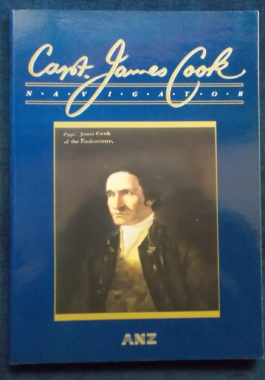 Published by the National Martime Museum of London in association with Campbell Publishing, Sydney. Over the centuries, many men have set out from Britain's shores to fight, trade or explore. Three in particular are known the world over - Francis Drake, Lord Nelson and Captain James Cook. Few people have inspired such interest and admiration as Cook, whose courage and navigational genius determined the course of history in the Pacific region. This book covers the man, his seamanship and the life he literally gave for the British Empire. Full of colour prints, reproductions, maps and photographs.
Published by the National Martime Museum of London in association with Campbell Publishing, Sydney. Over the centuries, many men have set out from Britain's shores to fight, trade or explore. Three in particular are known the world over - Francis Drake, Lord Nelson and Captain James Cook. Few people have inspired such interest and admiration as Cook, whose courage and navigational genius determined the course of history in the Pacific region. This book covers the man, his seamanship and the life he literally gave for the British Empire. Full of colour prints, reproductions, maps and photographs. -
 A portfolio of paintings by artists who sailed with Cook, able men with a spirit equal to their Captain's who earned, through their talent and courage, the fame their sketches, watercolours and oils of unknown lands brought to them. Beautiful colour, sepia and black and white artworks.
A portfolio of paintings by artists who sailed with Cook, able men with a spirit equal to their Captain's who earned, through their talent and courage, the fame their sketches, watercolours and oils of unknown lands brought to them. Beautiful colour, sepia and black and white artworks. -
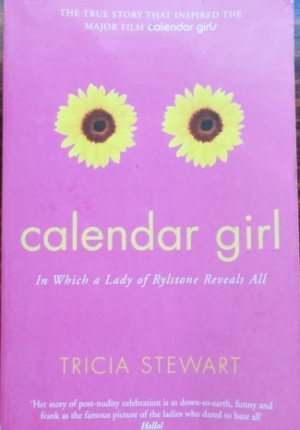
When John Baker died of cancer, many of his friends in the small Yorkshire village of Cracoe were devastated. During his illness, Tricia had joked with him about creating an alternative W.I. calendar - she and his wife Angela were members - but she had no notion of the events she would set in motion. Expecting only local interest, the ladies were stunned by the media frenzy when the calendar was launched in 1999. Over the next two years, the calendar girls found themselves in newspapers, on television, chosen as Women of the Year and touring America. They raised £500,000 for leukaemia research. This is NOT a film novelisation - this is the true story of the highs, lows, funny moments and sad ones too. 'It's not naked - it's nude!"




